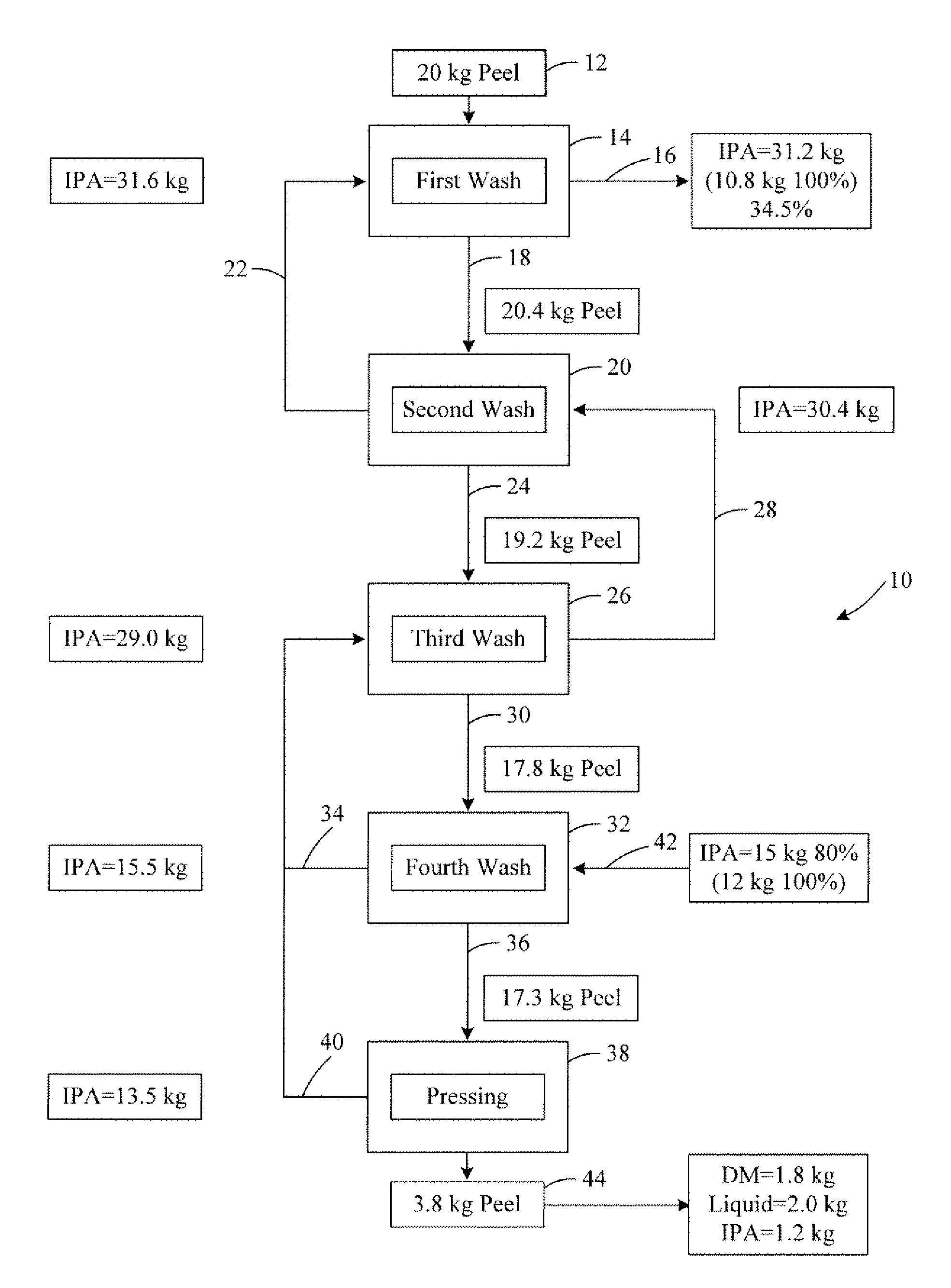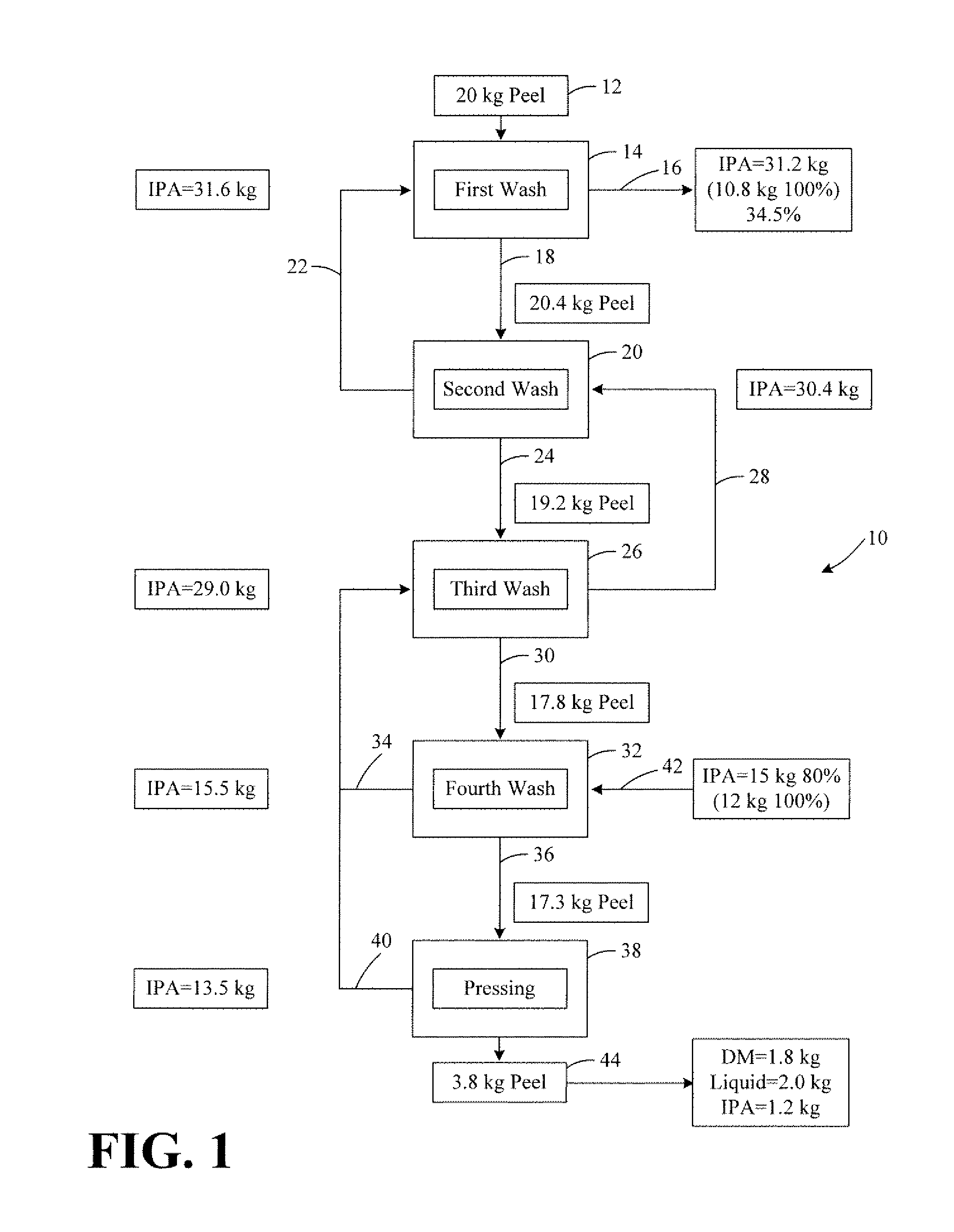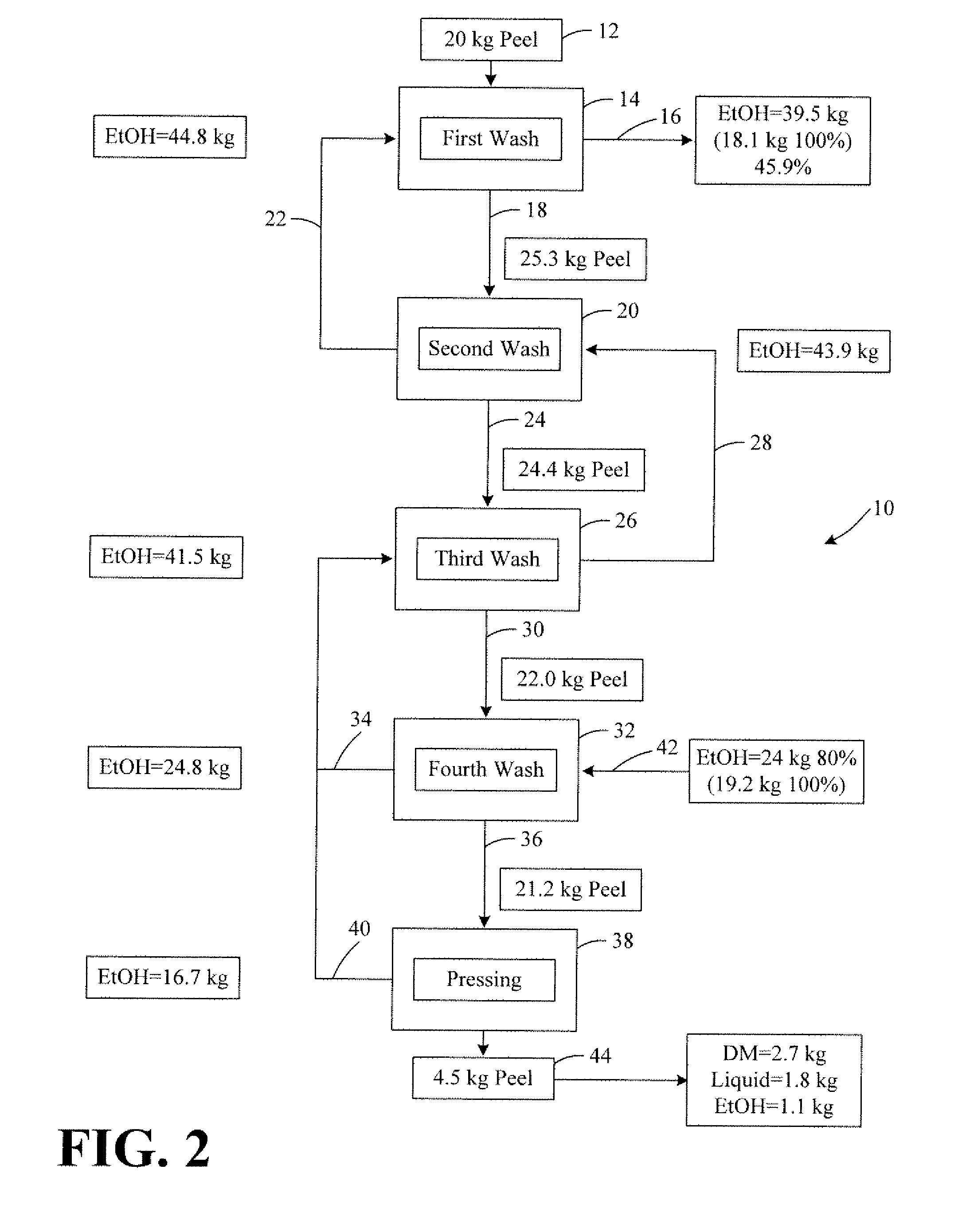Dewatering biomass material comprising polysaccharide, method for extracting polysaccharide from biomass material, and dewatered biomass material
a biomass material and polysaccharide technology, applied in the field of polysaccharide materials, can solve the problems of economic and environmental undesirable water from this process, and the economic and environmental undesirable water of wet polysaccharide containing biomass material by direct heating with combusted natural gas, and achieve the effect of facilitating mechanical separation of water
- Summary
- Abstract
- Description
- Claims
- Application Information
AI Technical Summary
Problems solved by technology
Method used
Image
Examples
example 1
Effects of Alcohol Strength
[0264]In the first set of experiments, peel dry matter, pectin yield, residual sugar concentration in the peel DE, and pectin molecular weight Mw were measured after one wash and one pressing under different conditions and the data is shown below in Table 1.
[0265]
TABLE 1Dry Matter, Sugar Concentration, Pectin Yield, DE and Molecular Weight ofWashed and Pressed Peel.DryMatterResidualWashOfin theMWSampleWettingNo.TimeNo.PressedPeelPectinKDaltonNo.CompositionWashMinPresspeel %Sugar %Yield %DE %of Pectin996% EtOH115120.025.117.074.32401070% EtOH115117.221.817.472.12181150% EtOH115114.514.271.72160No wash, no13.044.7press1No wash117.240.37Water115111.611.473.21898Water, pH = 4115111.424.313.971.7216
[0266]According to the data in Table 1, pectin yield increased with increasing alcohol concentration in the wetting composition. This indicates that an alcohol concentration of at least 70% resulted in significantly less loss of pectin in the wash.
[0267]Table 1 also ...
example 2
Effect of Number of Alcohol Wash
[0269]In this set of experiments, the number of alcohol washing steps was investigated.
[0270]
TABLE 2Dry Matter and Residual Sugar in Peel BeingWashed Different Number of Times.SugarWashDry MatterResidualSampleWettingNo.TimeNo.of PressedSugar inNo.CompositionwashMin.pressPeel %the Peel %996% EtOH115120.025.11296% EtOH215124.218.61396% EtOH315124.219.01496% EtOH415121.517.9
[0271]According to the data in Table 2, with 2-3 washes in 96% alcohol, the peel dry matter increased by about 20% after one pressing. 2-4 washings in 96% alcohol reduced the sugar concentration in the peel to about 18% or about 30% compared to washing once in 96% alcohol. Thus, 2-4 washings provided the highest dry matter and the lowest residual sugar concentration in the washed peel.
example 3
Effect of Washing Time
[0272]Next, the washing time was investigated. Peel dry matter and residual sugar was recorded for peel being washing for different times in 96% alcohol followed by one pressing.
[0273]
TABLE 3Dry Matter and Residual Sugar in Peel Washed for Different Times.WashSampleWettingNo.TimeDry Matter OfSugar ResidualNo.CompositionWashMin.Pressed Peel %Sugar in Peel %496% EtOH11523.525.1596% EtOH13023.020.5
[0274]According to the data in Table 3, with one pressing, peel dry matter was unchanged when washing time was increased from 15 minutes to 30 minutes and residual sugar was decreased with increasing washing time. Thus, the data in Table 1 indicates that washing for about 30 minutes provided for high peel dry matter and low residual sugar in the peel.
PUM
| Property | Measurement | Unit |
|---|---|---|
| particle size | aaaaa | aaaaa |
| temperature | aaaaa | aaaaa |
| temperature | aaaaa | aaaaa |
Abstract
Description
Claims
Application Information
 Login to View More
Login to View More - R&D
- Intellectual Property
- Life Sciences
- Materials
- Tech Scout
- Unparalleled Data Quality
- Higher Quality Content
- 60% Fewer Hallucinations
Browse by: Latest US Patents, China's latest patents, Technical Efficacy Thesaurus, Application Domain, Technology Topic, Popular Technical Reports.
© 2025 PatSnap. All rights reserved.Legal|Privacy policy|Modern Slavery Act Transparency Statement|Sitemap|About US| Contact US: help@patsnap.com



